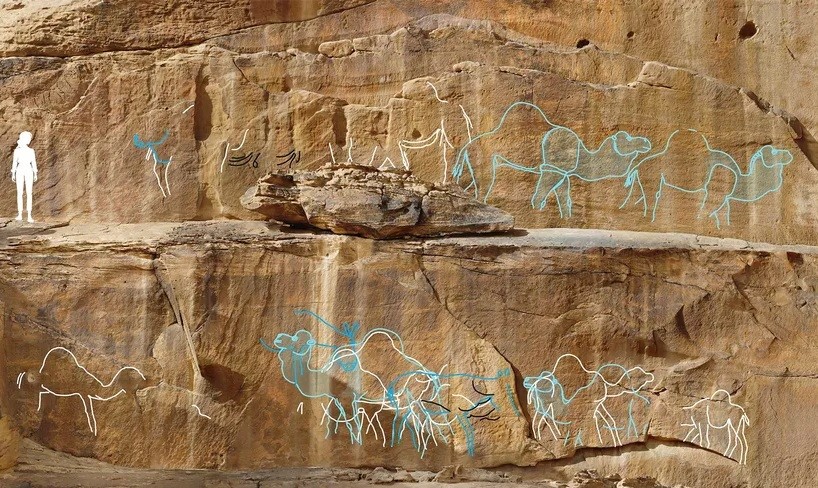12,000-Year-Old Rock Art in the Nefud Desert: Monuments Up to Two Meters High Rewrite Arabian Prehistory
Archaeologists have uncovered monumental rock art in the Nefud Desert dating to roughly 12,000 years ago, rewriting what we know about prehistoric Arabia. Some carvings tower up to two meters high, suggesting a sophisticated tradition of large-scale representation and a culture whose traces have nearly vanished from history. The discovery, published in Nature Communications, also shows a broader story: ancient people used art not only to express identity but as navigational aids in a desert landscape where water and animal routes shaped daily life.

In This Article:
What Was Found: Rock Art, Green Pigment, Beads, and Hundreds of Stone Tools
Researchers describe a remarkable collection: hundreds of rock images carved into rock surfaces, accompanied by green pigment and beads—likely linked to the same community. These works vary in scale, but the most striking are the giants—art that served as a visible map of territory and social identity. Hints from the toolkit suggest a society intimately tied to its environment, leaving behind durable traces that researchers are only beginning to read.
A Daring Craft: Images Located High on Cliff Faces
Some images are placed high on cliff faces, accessible only to those willing to climb sheer rock ledges. To document them, researchers relied on drones, since reaching those heights would have demanded dangerous, skilled ascent. The sheer height and scale—up to two meters tall—reframe how we imagine art in this ancient landscape.
Experts Explain the Significance
Dr. Maria Guagnin of the Max Planck Institute for Geoanthropology says the collection demonstrates a strong link between local people and the environment, and a desire to assert presence in the desert. Dr. Ceri Shipton of University College London adds that these monuments could have guided journeys and helped remember important routes, underscoring the crucial role of water and migratory paths for wildlife. “This unique collection demonstrates the connection between local inhabitants and the environment and their drive to assert their presence in the harsh desert,” Guagnin notes. Shipton adds, “Such monuments could have served as guides for travel and remembering important routes, highlighting the importance of water and paths of wild animal movements.”
What This Changes About Ancient Arabia
Taken together, the finds challenge the view of prehistoric Arabia as a sparsely populated desert, instead suggesting complex communities that used monumental art to map space, water, and movement. The presence of green pigment, beads, and hundreds of tools implies a durable, multifaceted culture that navigated and remembered the landscape through art. The Nature Communications study invites a reevaluation of the region’s prehistoric history and the role of the desert in shaping human life.
